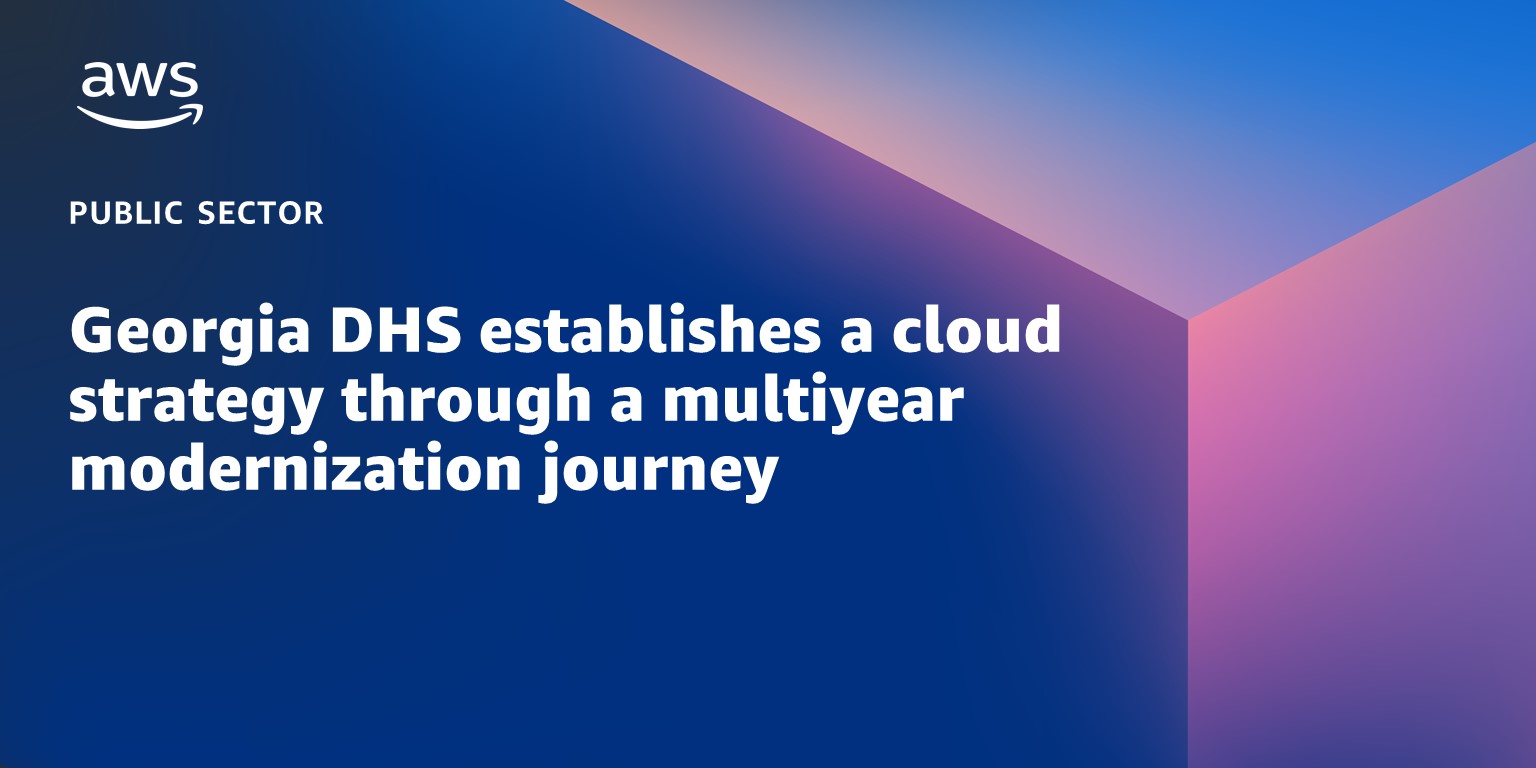AWS Public Sector Blog
Category: Customer Enablement
New AWS legacy transformation solution guide to identify, manage, and reduce legacy technology risk
To support public sector organizations looking to remediate legacy concerns, Amazon Web Services (AWS) has created a solution guide for legacy transformation. This comprehensive solution guide will enable public sector organizations to reduce the risks and costs of managing legacy systems while lowering their IT carbon footprint by moving to the cloud.
ASPPH scales data curation for members with a data lake on AWS
The Association of Schools and Programs of Public Health (ASPPH) — a nonprofit association with a vision for improved health and well-being for everyone, everywhere — partnered with Amazon Web Services (AWS) Professional Services (AWS ProServe) to move their curated data to a managed data lake on AWS. In this blog post, we share how ASPPH and AWS designed and built the data lake and the results of moving to a modern, scalable data architecture.
Higher education institutions broaden learning opportunities with AWS Professional Services
The University of North Carolina (UNC) System is expanding education opportunities for adult learners in the state of North Carolina. The UNC System launched Project Kitty Hawk as a nonprofit education technology (EdTech) startup to meet that goal. Read this post to learn how Project Kitty Hawk partnered with Amazon Web Services (AWS) Professional Services to build an extensible integration platform for EdTech systems that unites service and data integration across its entire network of EdTech and operational systems.
Mainframe modernization on AWS can help maximize value from $2.4B federal spend on legacy systems
According to the Government Accountability Office (GAO), the federal government’s 10 legacy systems most in need of modernization cost about $337 million a year to operate and maintain, which accounts to a $2.4 billion spend on legacy systems by 2030. Read this blog post to learn how organizations can leverage Amazon Web Services (AWS) to maximize value as they evaluate their mainframe modernization strategy.
Making financial aid simple for students and staff: How Highline College collaborated with AWS on a financial aid tracking tool
As student enrollment begins to stabilize at colleges and universities, higher education leaders are focused on supporting equitable access to postsecondary education. Many leaders are turning to technology to address systemic barriers to education by making services more transparent, efficient, and simple for learners and staff. Together with AWS, Highline College’s financial aid department created a key tool that helped eliminate one such barrier.
Why unemployment insurance systems belong in the cloud
States are reevaluating the resiliency, security, and adaptability of their unemployment insurance (UI) systems. The AWS whitepaper, Why Unemployment Insurance Systems Belong in the Cloud, explores lessons learned from the pandemic – and provides opportunities for a path forward. While there’s no one-size-fits-all approach to modernization, we propose five tenets to anchor a vision of modern UI benefits systems and explore the different technical approaches to realize that vision.
Designing a biometric IoMT solution to support health equity with AWS ProServe
Healthcare organizations worldwide are embracing the concept of connective devices using the internet of medical things (IoMT). Logiksavvy Innovations (LSI) is a healthcare technology (HealthTech) startup that focuses on research and development (R&D) of innovative technologies that impact healthcare, self-care, and the community. LSI set out to develop an IoMT solution with the capability to detect and prevent critical health events. Working with AWS through the Health Equity Initiative, LSI collaborated with AWS ProServe to develop a viable proof-of-concept with the AWS Cloud.
Georgia DHS establishes a cloud strategy through a multiyear modernization journey
Georgia’s Department of Human Services (DHS), the largest of the state’s agencies, was able to digitally transform their business and rapidly scale their AWS Cloud adoption with AWS Managed Services (AMS). The department used AMS to modernize legacy technology onto a hosted platform that meets rigorous security guidelines and adds reliability to an environment where speed and availability are critical. At re:Invent 2022, Sreeji Vijayan, chief information officer of the Georgia DHS, spoke about the Georgia DHS’s migration journey with AWS. Learn key takeaways from Georgia DHS’s migration experience with AWS, and watch the on-demand session to dive deeper.
How the US DOJ Tax Division built a remote telework application in six weeks with AWS
In mid-February of 2022, the US federal government began planning the return-to-office after the COVID-19 pandemic. The US Department of Justice (DOJ) Tax Division needed to quickly build and launch a telework authorization application by April 1, which would help their more than 500 attorneys, paralegals, and administrative personnel request a hybrid work arrangement—all while keeping sensitive information compliant and secure. To do this, the DOJ Tax Division worked with AWS to build an enterprise-level telework approval application in less than two months, before the Division’s re-entry in mid-April of 2022.
Four ways to buy cloud with federal year-end funds
The end of the US federal government fiscal year is fast approaching. With budget left to spend before September 30, agencies need to obligate their remaining 2022 fiscal year funds. AWS can provide federal agencies with options to procure future cloud computing resources using current-year funds. Learn more about efficient purchasing recommendations to meet your agency’s needs.









